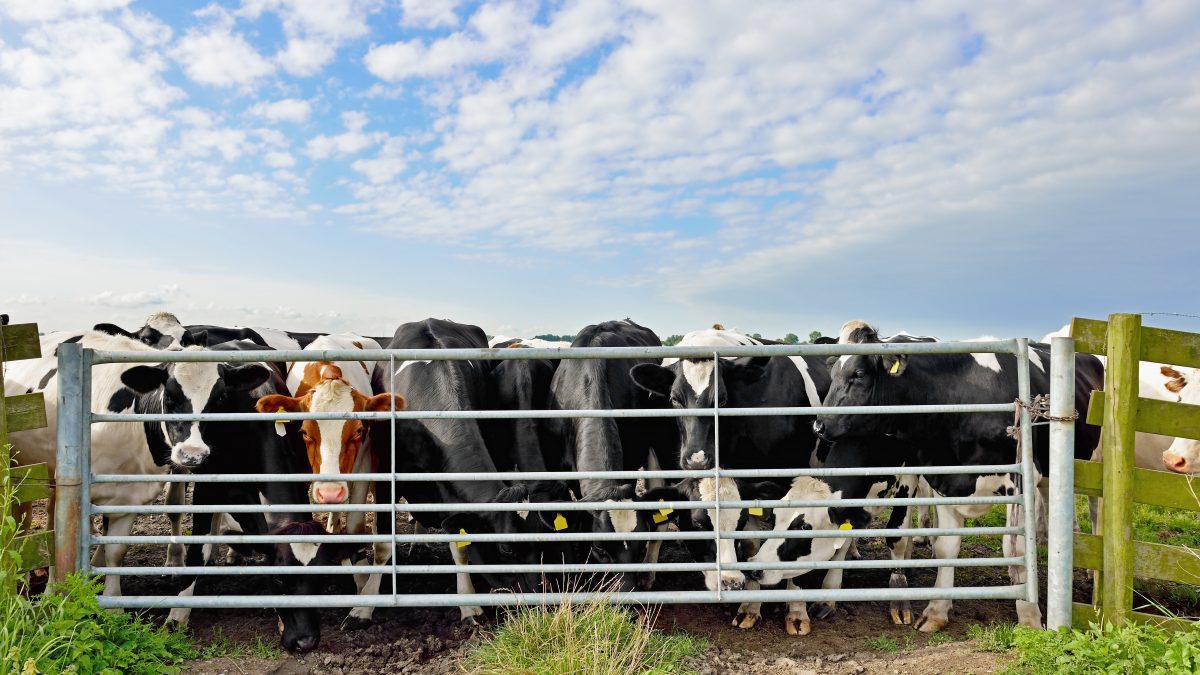As a farmer, owning a farm comes with the responsibility of diligent maintenance, particularly when it comes to safeguarding your valuable assets, which may include cattle, livestock, and crops. One of the essential aspects of farm maintenance is the installation of good-quality farm fences and gates.
Cattle Gates are sturdy barriers that not only provide optimum protection for your livestock and crops but also help create boundaries, especially near water resources. However, when it comes to livestock management, there are various factors to consider, including the need to keep herds well-contained and prevent disturbances to neighboring farms.
In this context, the importance of cattle gates in enhancing livestock management becomes evident. Cattle gates offer numerous benefits that contribute to the effective management of livestock, ensuring they are safely contained while minimizing any potential disruptions to surrounding farms.
In this article, we will explore the remarkable significance of cattle gates in enhancing livestock management and the advantages they bring to farmers in maintaining the integrity and productivity of their farms.
What are Cattle Gates?
Cattle gates, also known as cattle guards, are essential components of farm infrastructure that play a crucial role in managing livestock and maintaining the integrity of the farm. These gates are typically installed where a road crosses a fence line on farms or ranches, in open-range states, or in high-traffic corridors to prevent wildlife crossings.
Cattle gates are designed to create a visual barrier that prevents cattle, horses, and other livestock from crossing over to the other side. The animals’ limited depth perception and color blindness create an illusion of extreme depth and separation underneath and between the bars, deterring them from attempting to cross.
What is Livestock Management?
Livestock management refers to the practice of efficiently and effectively caring for and overseeing farm animals, particularly those raised for agricultural purposes. It involves various aspects, including animal husbandry, nutrition, health management, breeding, and overall farm operations. Livestock managers are responsible for ensuring the well-being and productivity of the animals under their care, as well as the profitability and sustainability of the farm.
Livestock management encompasses a range of tasks, such as providing proper nutrition, ensuring access to clean water and shelter, monitoring animal health, implementing breeding programs, managing reproduction, and handling livestock in a low-stress manner. It also involves making informed decisions regarding animal welfare, disease prevention, and the use of technology and best practices to optimize production.
Types of Fencing in Livestock Farms
Livestock farms utilize various types of fencing to meet their specific needs and ensure the containment and protection of their animals. Here are some common types of fencing used in livestock farms:
1. Wire Fences
Wire fences are a commonly used type of fencing in livestock farms due to their versatility and affordability. There are two main types of wire fences: woven wire and welded wire. Woven wire fences consist of horizontal and vertical wires woven together, creating a sturdy and durable barrier. They have larger spacing between cables, making them suitable for containing larger animals like cattle. Welded wire fences, on the other hand, consist of smaller welded wire mesh. They are commonly used for smaller livestock or as a secondary fence for added security.
2. Wood Fences
Wood fences are popular in livestock farms, primarily for aesthetic purposes or to create boundaries within the farm. They can be constructed using various types of wood, such as cedar or treated lumber. Wood fences offer a traditional and rustic look, blending well with the natural surroundings. They provide a solid barrier and can be built to various heights depending on the livestock being contained.
3. Hedges
Hedges made of dense shrubs or bushes can serve as natural fences in livestock farms. They provide a visual barrier and can act as windbreaks, offering shelter for the animals. Hedges can be effective in containing livestock, especially when combined with other types of fencing. However, they require regular trimming and maintenance to remain dense and impenetrable. Suitable plant species for hedges in livestock farms include privet, boxwood, or thorny shrubs like blackberry bushes.
4. Pipe and Cable Fencing
Pipe and cable fences are commonly used in horse farms or areas where livestock may challenge the border. They consist of metal pipes as posts and cables running horizontally between the posts. This type of fencing offers durability and strength, making it suitable for containing large and powerful animals. Pipe and cable fences are typically more expensive than other types of fencing, but they provide a secure enclosure and can withstand the pressure and impact of livestock.
5. Barbed Wire Fences
Barbed wire fences consist of strands of wire with sharp barbs spaced along them. They are often used as perimeter fences to deter livestock from crossing boundaries. Barbed wire fences are cost-effective and relatively easy to install. However, they pose a risk of injury to animals, especially if they become entangled or attempt to jump over the fence. Careful installation and regular maintenance, including checking for broken wires or loose barbs, are essential to minimize the risk of injury.
8 Most Remarkable Importance of Cattle Gates
Cattle gates play a crucial role in the management and handling of livestock on farms and ranches. Their importance cannot be overstated, as they contribute to the overall efficiency, safety, and well-being of both cattle and farmers. Here are eight remarkable reasons why cattle gates are essential:
1. Disease Prevention
Cattle gates play a crucial role in preventing the spread of diseases within a livestock farm. By effectively controlling the movement of animals, cattle gates help minimize the risk of contamination and transmission of diseases between different herds or groups. This is particularly crucial when dealing with mixed livestock species or when it’s necessary to separate animals according to their health. By implementing proper cattle gate systems, farmers can significantly reduce the chances of disease outbreaks and protect the overall health of their livestock.
2. Cattle Safety Assurance
One of the primary purposes of cattle gates is to ensure the safety and well-being of the livestock. Cattle gates act as physical barriers that prevent cattle from wandering onto roads or into hazardous areas, reducing the risk of accidents and injuries. They create a secure boundary that keeps the animals within designated areas, protecting them from potential dangers and minimizing the chances of theft or predation. With properly installed and maintained cattle gates, farmers can have peace of mind knowing that their livestock is safe and secure.
3. Efficient Herd Separation
Cattle gates enable efficient separation of different herds or groups of livestock. This is particularly important when managing animals with different needs, such as breeding stock, young calves, or animals requiring specific diets or medical treatment. By having designated areas for each group, farmers can easily manage and monitor the different herds, ensuring that they receive appropriate care, nutrition, and attention. Efficient herd separation also helps prevent conflicts between animals and reduces the risk of injuries or stress caused by overcrowding.
4. Better Livestock Organization
Cattle gates contribute to the overall organization and structure of livestock farms. They create clear boundaries and pathways, making it easier to manage and move animals within the farm. With proper organization, farmers can efficiently handle tasks such as feeding, watering, and veterinary care, saving time and effort. Additionally, organized livestock management facilitates record-keeping, data collection, and overall farm operations, leading to improved productivity and profitability.
5. Economical Livestock Management
Cattle gates offer economic benefits to livestock farmers. Unlike traditional gate systems that require constant opening and closing, cattle gates provide a cost-effective solution. They eliminate the need for manual labor or the installation of multiple gates, reducing operational costs and increasing efficiency. Additionally, cattle gates are durable and require minimal maintenance, resulting in long-term cost savings for farmers.
6. Enhanced Grazing Control
Cattle gates play a crucial role in optimizing grazing management. They allow farmers to control and monitor the livestock’s access to specific grazing areas, preventing overgrazing and ensuring the proper utilization of available resources. By strategically designing grazing patterns and utilizing cattle gates, farmers can maintain healthy pastures, prevent soil erosion, and promote sustainable land management practices.
7. Stress Reduction for Cattle
Cattle gates contribute to the overall well-being of the animals by minimizing stress. Clear pathways and organized movement within the farm reduce the need for excessive handling and herd disturbances. With well-designed cattle gate systems, farmers can create a calm and controlled environment for the livestock, promoting their overall health, productivity, and behavioral stability.
8. Aesthetically Improved Environment
Cattle gates not only serve practical purposes but also enhance the visual appeal of the farm environment. Well-designed and adequately installed cattle gates add a touch of professionalism and aesthetic appeal to the overall appearance of the farm. This creates a positive impression for visitors, potential buyers, and stakeholders, reflecting the care and attention given to livestock management and farm operations.
To Wrap Up
The significance of cattle gates in enhancing livestock management cannot be overstated. As responsible farmers, investing in high-quality cattle gates and incorporating them into your livestock management practices is not just a practical choice but a crucial one. By doing so, you can safeguard your valuable assets, promote the health and well-being of your livestock, and ultimately ensure the long-term success of your farming endeavors. So, whether you’re a seasoned farmer or just starting, remember that cattle gates are not just physical barriers but essential tools for a thriving and well-managed farm.



